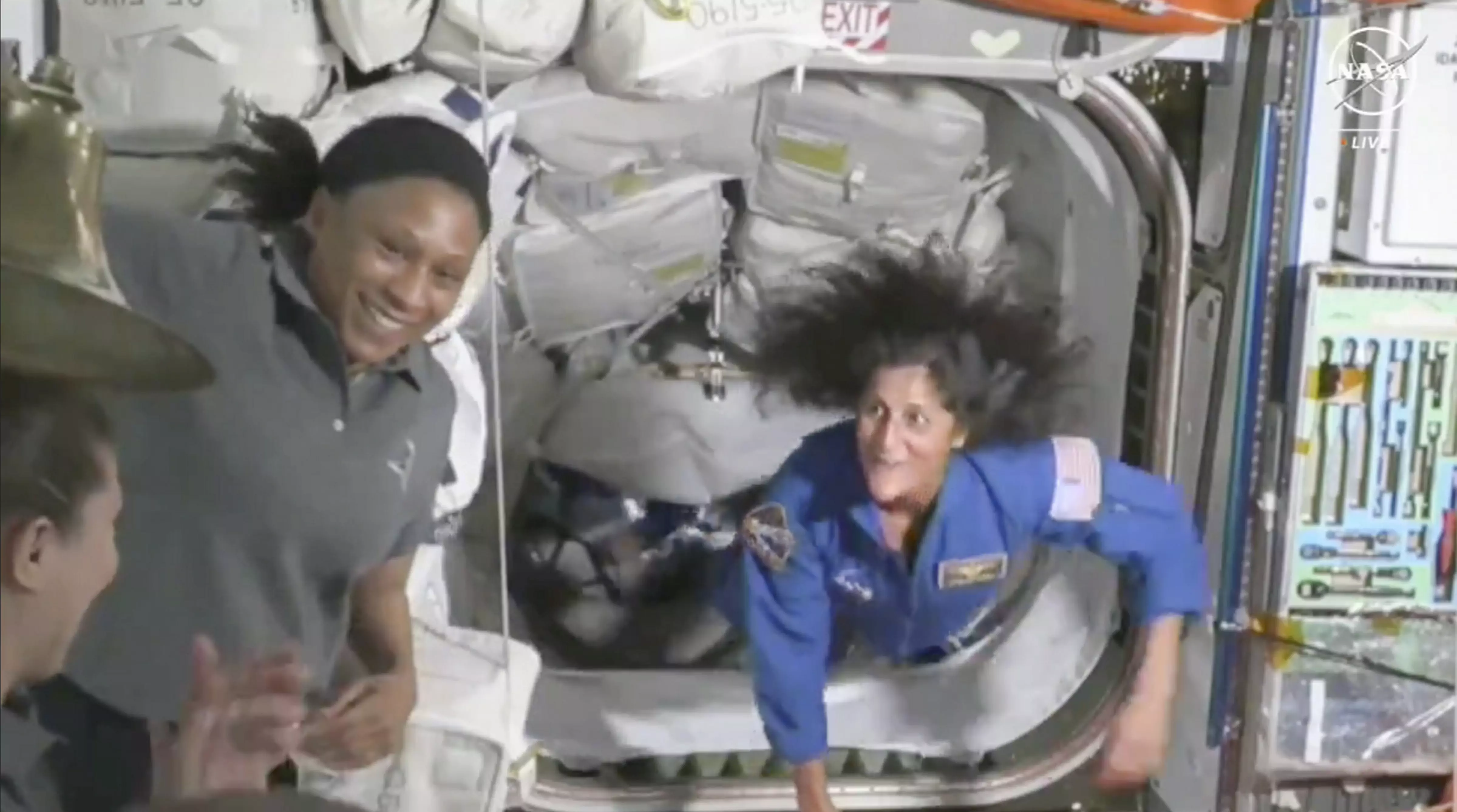
Helium leaks, thruster failures, now superbug: Challenges galore for Sunita Williams and team
Since December 2019, Starliner, which Williams helped design, faced one challenge after the other, and the launch had to be aborted twice

Boeing’s Starliner spacecraft, which faced a series of hurdles before it finally took off with Nasa astronauts Sunita Williams (58) and Barry Eugene “Butch” Wilmore (61) on June 5, gave more trouble to the seasoned astronauts on the way to the International Space Station (ISS). The duo overcame helium leaks and thruster failures to dock the spacecraft with the ISS on June 6.
Helium leaks
Even before Starliner was launched from Florida’s Cape Canaveral Space Force Station, the team knew about one helium leak.
Helium is non-combustible, so there was fear of a fire, but it is needed for exerting pressure to the propulsion system and enables thruster firing. However, since the leak was considered too minor to make a significant impact, Starliner was launched despite it.
However, during the flight, two more leaks emerged, while a fourth one was discovered after docking. While it seems the spacecraft suffers from at least one issue, which is causing the leaks, the astronauts had no option mid-flight but to manually close the helium valves to ensure that the Starliner remained on course and continued its mission. The duo cut their sleep time to do it though they made up for it later.
Thruster issues
Next, five of Starliner’s thrusters that enable fine manoeuvring failed to get going, delaying docking by more than an hour.
The astronauts then performed what is called a “hot fire” to activate them. They managed to activate four of the five malfunctioning thrusters and docked the spacecraft despite one not working. The team is yet to figure out what caused the malfunction.
Plagued by problems
Since December 2019, Starliner, which Williams helped design, faced one challenge after the other, including communication glitches, software error, corroded propeller valves, thruster failures, protective tapes turning out to be flammable, and weak parachutes. The launch had to be aborted twice, the last one on June 1, less than four minutes before liftoff, with Williams and Wilmore strapped in their seats.
There was a time when Boeing seemed to be ahead in the competition with SpaceX to become the first private US company to take astronauts to low Earth orbit. However, because of these problems, it fell far and far behind SpaceX in providing the service.
Boeing has finally made it with the successful docking of the Starliner with the ISS on its maiden flight, but many more challenges remain before it can be considered reliable in the long run.
Space superbug
For Williams, Wilmore, and the seven other crew members they joined on board the ISS, though, there seems to be more trouble in store. Apparently, there is a superbug inside the ISS that can infect the respiratory system.
The multi-drug-resistant bacteria, named Enterobacter Bugandensis (ET), has reportedly mutated under stress in the closed environment of the ISS and become more potent. Multi-drug-resistant bacteria are often called “superbugs”.
The study was spearheaded by Dr Kasthuri Venkateswaran of NASA’s Jet Propulsion Laboratory in Pasadena, California. The researchers say astronauts in space, with altered immune conditions and limited access to traditional healthcare facilities, may face unique medical challenges.

